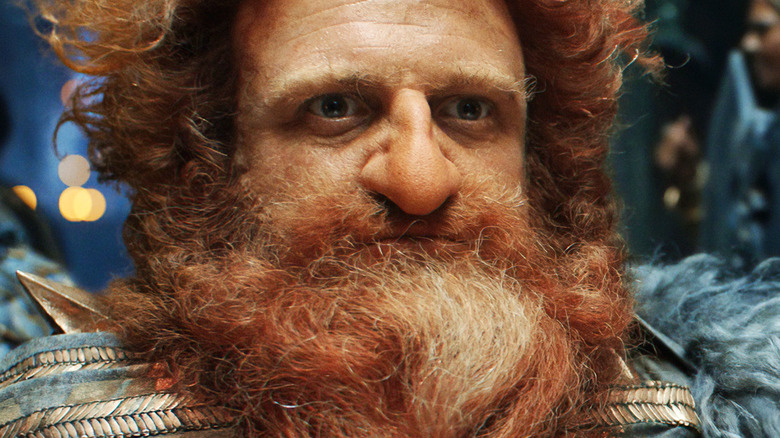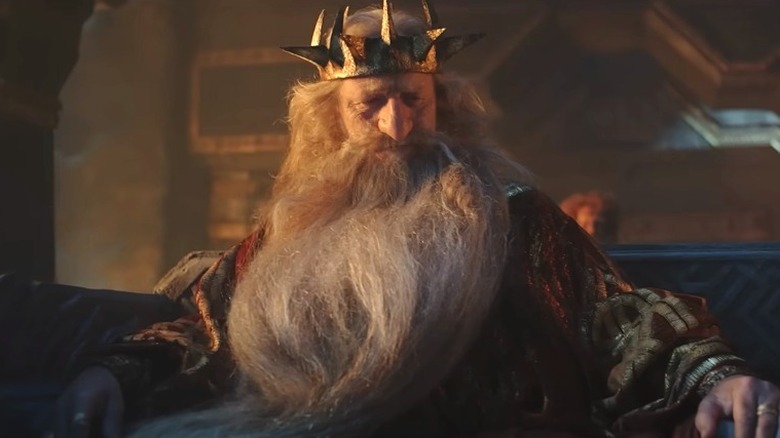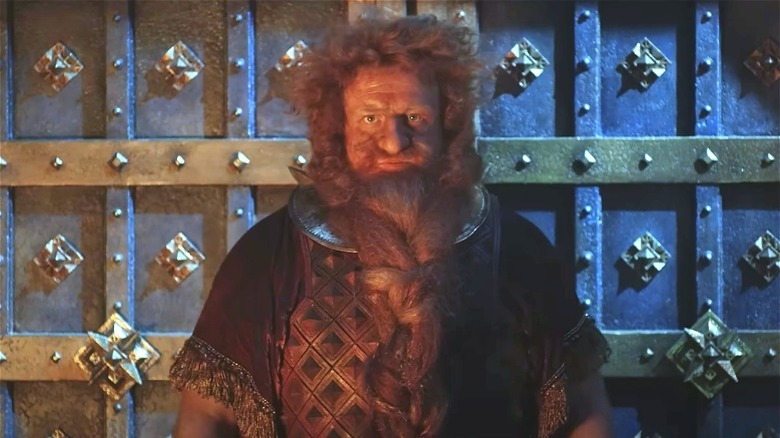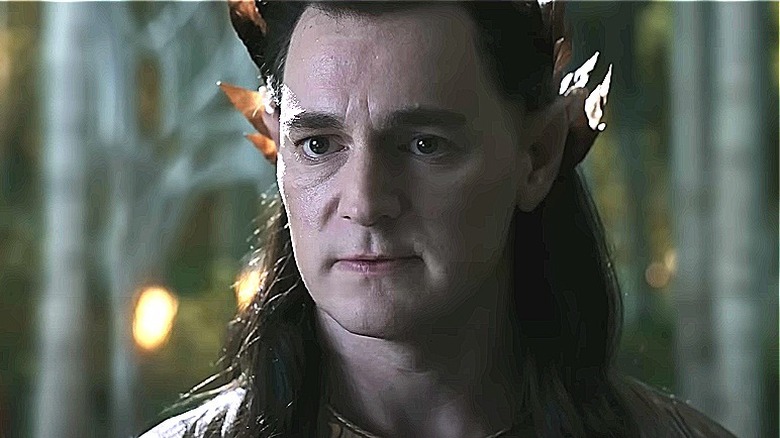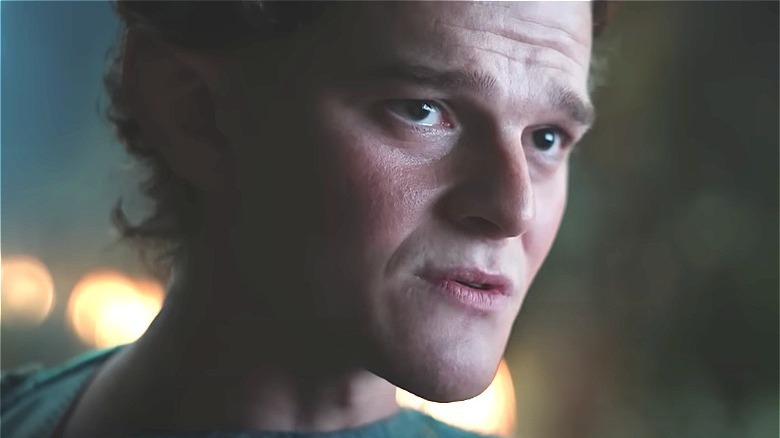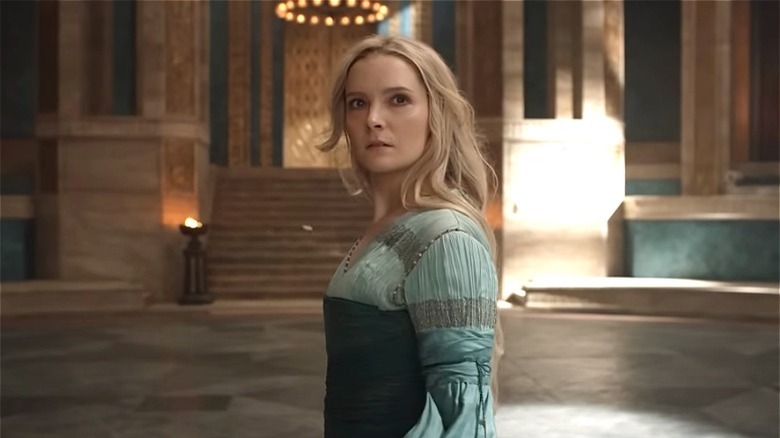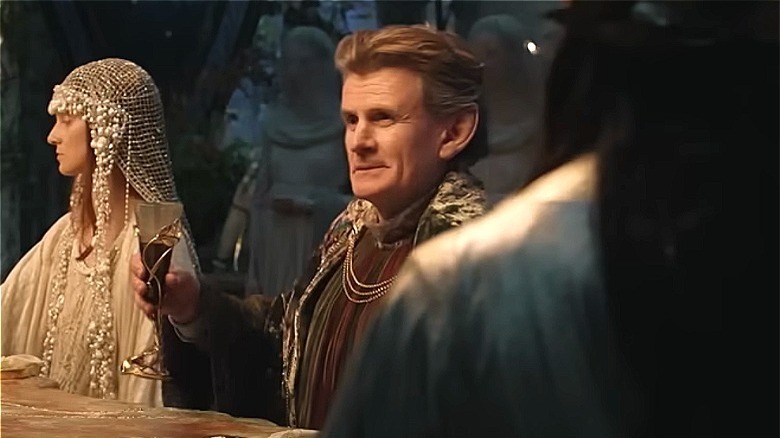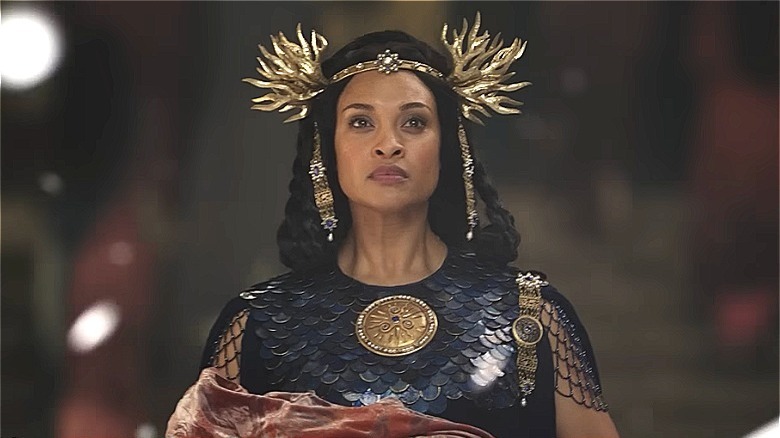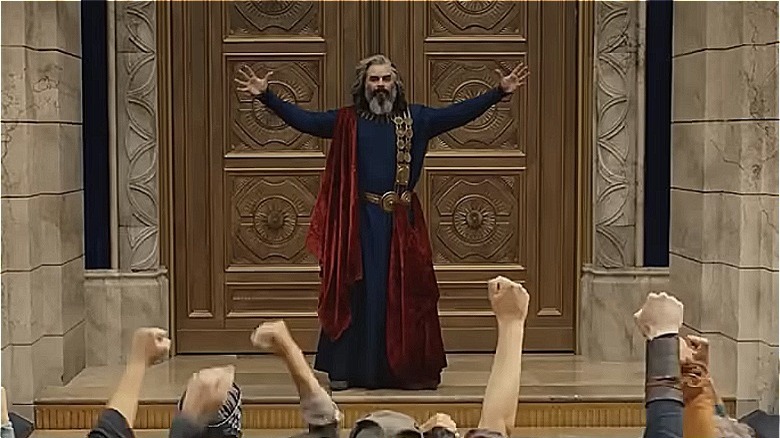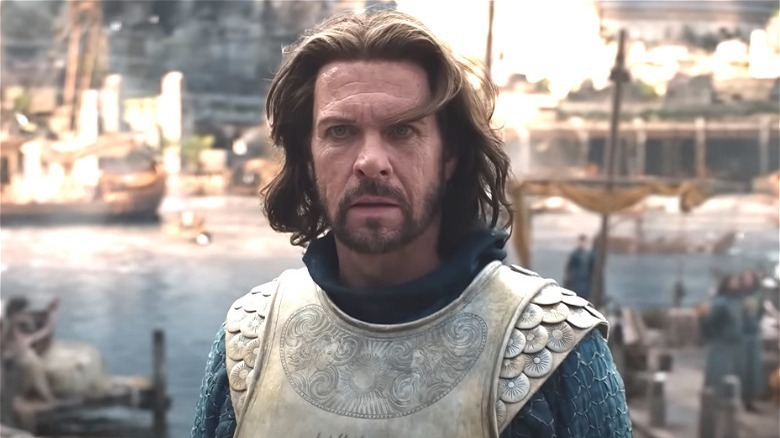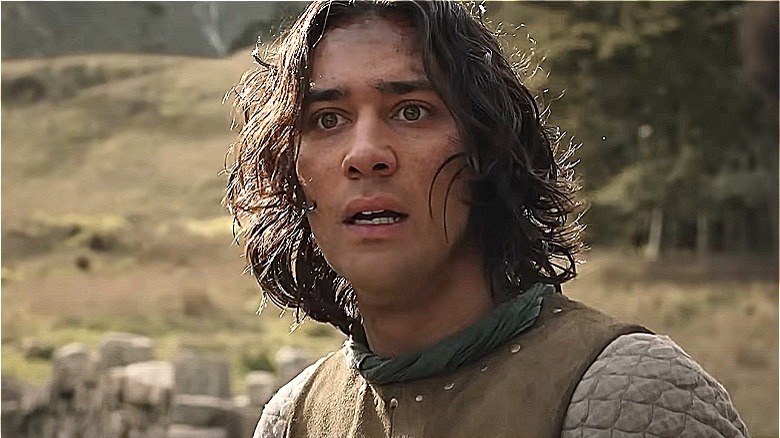What The Lord Of The Rings: The Rings Of Power Cast Should Really Look Like
Amazon Prime's "The Lord of the Rings: The Rings of Power" series is a glittering delight for fantasy fans all around the world. Set long before the events captured in the "Lord of the Rings" and "Hobbit" film trilogies, this show takes bold new characters and familiar favorites alike on a grand adventure across Middle-earth. "The Rings of Power" unfolds during the Second Age, the era in which Sauron first comes to power and the Alliance of Elves and Men is founded. War is on the horizon, threatening the lives of men, Elves, and all else who call Middle-earth home. The series also explores the origin of the One Ring, and, of course, the other Rings of Power.
Though fans of Peter Jackson's movies will recognize the names of some of the show's characters, others are unfamiliar. Some of them are completely original characters created for the show (such as Arondir, an Elf unique to "The Rings of Power"), while others are taken directly from Tolkien's stories. Diehard fans are on the lookout for significant deviations from the books — specifically, how these heroes and villains' appearances are described, versus their on-screen looks. Curious about how these players stack up against their literary counterparts? Then join us as we explore what the cast of "The Lord of the Rings: The Rings of Power" should really look like.
King Durin III
In Peter Jackson's "The Lord of the Rings: The Fellowship of the Ring," Frodo (Elijah Wood) and the rest of the Fellowship are forced to flee through the cavernous ruins of Khazad-dum in an exciting chase scene that culminates in Gandalf (Ian McKellen) going up against the terrible Balrog. In "The Lords of the Rings: The Rings of Power," viewers get to see this grand Dwarven city in its prime.
The ruler of Khazad-dum is King Durin III, played by Peter Mullan. One of the legacy of Dwarves known as Durin's Folk, Durin III is one of the seven to receive a Ring of Power. He has gray hair and a luxuriously long beard of a similarly steely hue, which suggest he's getting on in years during the time in which "The Rings of Power" takes place. He also wears a spiked crown fashioned out of metal, and fine robes, befitting his high station.
There is no physical description of King Durin III in Tolkien's work, although it is said in the appendices of "The Lord of the Rings" that Durin III looks remarkably like his ancestor, Durin I. In fact, each new son born of Durin's line looks so much like the original Durin that all of them are thought to be reincarnations of the first. Mullan's appearance, augmented by impressive prosthetics, is so genuinely Dwarf-like, it's easy to picture the book's Durin III looking exactly like him.
Prince Durin IV
The son of King Durin III is Prince Durin IV, played by actor Owain Arthur. In the official trailer for "The Lord of the Rings: The Rings of Power," Durin IV can be seen with the Dwarf princess Disa (Sophia Nomvete), who tells him earnestly that Khazad-dum will be his to rule one day. The context of this brief clip is unknown as of yet, but we can speculate that the young prince may be reluctant to take his father's place on the throne. We can also guess that there may be a divide between father and son, as King Durin III presumably tells Prince Durin IV in the July teaser trailer, "I am sorry, but their time has come." Who exactly the king is referring to is, as yet, a mystery. But it's distinctly possible that the prince may be pleading with his father to aid the Elves and men in the war against Sauron, and King Durin III has chosen to abstain.
According to Tolkien's writings, all of Durin's descendants have a remarkable resemblance to him, which includes Prince Durin IV. Prince Durin IV has thick red hair that sticks out at the ends, and a long, voluminous beard that is plaited into a single braid. It's possible that Durin IV is the spitting image of King Durin III in his youth, before his old age caught up with him.
High King Gil-galad
High King Gil-galad, played by actor Benjamin Walker, has an important role in the story "The Lord of the Rings: The Rings of Power" tells. He is the High King of the race of Elves known as the Noldor, or the "Deep-elves." Gil-galad is mentioned in many of Tolkien's works, including "The Silmarillion" and "The Lord of the Rings," as well as later works published by his estate including "The History of Middle-earth" and "The Nature of Middle-earth."
In these books, Gil-galad is witness to many of the great battles of the War of Beleriand, in which the Elves leave their home of Valinor to pursue Morgoth and reclaim the Silmarils. He himself is much too young to fight at this time, however, and so he is moved to safety along with his mother by his father, Orodreth. After becoming king in the realm of Lindon, Gil-galad joins with Elendil of Gondor in the fight against Sauron, forming the Last Alliance of Elves and Men. At one time, Gil-galad holds two Rings of Power, one of which he gives to Elrond.
The description of Gil-galad in the books is remarkably vague, but "The Nature of Middle-earth" describes the Elven king as being notably tall and having lustrous silver hair. In "The Lord of the Rings: The Rings of Power," Gil-galad has long, dark brown hair. Why the makers of the show decided to change this aesthetic detail is unknown, though sticklers for accuracy may slight them for it.
Elrond
Memorably played by Hugo Weaving in the "Lord of the Rings" and "Hobbit" movies, "The Lord of the Rings: The Rings of Power" features a much younger Elrond. This incarnation of the character, portrayed by actor Robert Aramayo, is a long ways away from becoming the wise leader of Rivendell movie fans know and love. When we meet Elrond in "The Rings of Power," he is a loyal follower of High King Gil-galad. He is also close friends with Galadriel, and wishes for her to retire her warrior ways following the victory against the Dark Lord Morgoth.
Tolkien's "The Fellowship of the Ring" gives a very poetic description of Elrond's appearance: "The face of Elrond was ageless, neither old nor young, though in it was written the memory of many things both glad and sorrowful. His hair was dark as the shadows of twilight, and upon it was set a circlet of silver; his eyes were grey as a clear evening, and in them was a light like the light of stars." In "The Lord of the Rings: The Rings of Power," young Elrond has wavy brown hair and brown eyes, as opposed to hair as dark as shadows and strikingly gray eyes. He might not fit the exact physical description of the character from the books, but then, this is a younger version of the character, who has not seen the horrors yet to be inflicted by the wicked Sauron.
Galadriel
The young Galadriel of "The Lord of the Rings: The Rings of Power" is played by Morfydd Clark. While fans of the Peter Jackson movies may know her as one of the most powerful Elves in existence and the Lady of Lothlorien, the Amazon Prime series takes place many years in the past. Here, Galadriel is a hardened fighter fresh off the battlefield in the war against Morgoth.
Tolkien's "The Silmarillion" and "Unfinished Tales" tell how Galadriel and other Noldor elves, along with Galadriel's brothers and cousins, leave the lands of Valinor and sail to Middle-earth. After meeting and marrying Celeborn, Galadriel and her husband are given reign over the Elven kingdom of Eregion by High King Gil-galad. It isn't until later that Celeborn and Galadriel leave Eregion to become Lord and Lady of Lothlorien.
Galadriel is described in the books as being exceptionally tall (6 feet, 4 inches, to be exact) and having gray eyes. But it is Galadriel's hair that is her crowning glory. "Unfinished Tales" describes her tresses as gold and silver, reminiscent of the Two Trees of Valinor. Feanor, creator of the Silmarils, is so enraptured by the beauty of her hair that he begs Galadriel for a lock of it three times. Each time, she refuses.
In "The Rings of Power," Galadriel has long, wavy, pale blonde hair. She's much shorter than her literary counterpart: Tolkien's Galadriel stands above most Elves, while the series' incarnation is of more typical stature. She may not be a perfect facsimile, but Clark's Galadriel is still an ethereal being brimming with ageless presence.
Celebrimbor
The Elf Celebrimbor makes his first on-screen appearance in "The Lord of the Rings: The Rings of Power." Played by Charles Edwards, Celebrimbor is a descendent of Feanor, who led the Elves on their first journey to Middle-earth. He is a veteran of many battles in the First Age's war against Morgoth. As Tolkien fanatics know well, Celebrimbor is also the legendary smith who forged the three Rings of Power for the Elves.
In the Amazon Prime series, Celebrimbor is currently the Lord of Eregion, who is working closely with the Dwarves of Khazad-dum. This alliance is beneficial to both sides, as Celebrimbor is considered a master craftsman, and the Dwarves are renowned for their excellent smiths. Notably, it is Celebrimbor who encourages the Dwarves to begin the mining of mithril, the precious metal that resides within the mountains of the Dwarven kingdom.
There is no physical description of Celebrimbor offered in Tolkien's various works. However, as he's one of the Noldor Elves, we can reasonably assume that Celebrimbor shares their classic characteristics. These Elves are known for their clear gray eyes and strikingly dark hair. In "The Rings of Power," Celebrimbor has light brown hair, which seems to be graying very slightly at the edges. As far as accuracy goes, this look seems to go against Tolkien's lore — but of course, this assumes Celebrimbor of the books possesses all the typical features of his people. That might be likely, but it isn't set in stone as canonical fact.
Queen Regent Miriel
Fans of the "Lord of the Rings" movies may remember that Aragorn (Viggo Mortensen) is not only the lost King of Gondor, but also one of the Dunedain of Numenor. The Numenoreans were the earliest race of humans in Middle-earth, and are blessed with a longer than average lifespan. Eventually, Numenor sinks into the sea, and the remaining survivors are forced into exile.
"The Lord of the Rings: The Rings of Power" introduces Queen Regent Miriel of Numenor (called Tar-Miriel in Tolkien's texts), played by Cynthia Addai-Robinson. Miriel is meant to succeed the throne after the death of her father, King Tar-Palantir. However, her cousin, Pharazon, usurps the throne and takes her as his wife.
Tolkien's books do not give a physical description of Miriel, though she is mentioned briefly in "The Silmarillion," "The Lost Road and Other Writings," and "The Peoples of Middle-earth." Because Miriel is one of the Dunedain, we can assume she stood a chance of inheriting her people's characteristic dark hair. As portrayed by Addai-Robinson, Miriel is a regal figure: She has long, elaborately styled dark hair, brown skin, and dark brown eyes. Her garments are among the most resplendent in "The Rings of Power," constructed of rich fabrics, shining beads, and glimmering metals. Her accessories are especially impressive: Her golden crown resembles dazzling flames, while a bright medallion shines on her chest.
Pharazon
Played by Trystan Gravelle in "The Lord of the Rings: The Rings of Power," Pharazon is the last king of Numenor before the realm is destroyed. As mentioned in Tolkien's books, including "The Silmarillion" and "The History of Middle-Earth," he is a great soldier who has fought and won many battles throughout the land. Notably, he shares the wealth he's accumulated from his victories with the people of Numenor, which earns him massive support and respect from the population.
Unfortunately, Pharazon's success also makes him vain, venal, and greedy. He disagrees with his uncle, Tar-Palantir, on many fronts — especially regarding his friendship with the Elves of Middle-earth. Upon the king's death, Pharazon weasels his way into stealing the throne from his cousin, Miriel, whom he proceeds to marry to solidify his claim. He then plunges to new depths when he breaks the alliance with the Elves, even going so far as to forbid the Elven language from being spoken in the kingdom.
When we meet Pharazon in "The Rings of Power," he seems to have put his warrior days well behind him, having traded battle-scarred armor for extraordinarily fine robes. This Pharazon has long hair and a full beard, which have both grown salt-and-pepper-colored with advancing age. Tolkien's books don't tell readers what Pharazon looks like, precisely, but his Numenorean blood implies he probably has dark hair that would indeed gray as the years go on. Thus, Amazon Prime's Pharazon stands a strong chance of resembling the one Tolkien imagined.
Elendil
Once the High King of the Dunedain in Middle-earth, Elendil is an ancestor of Aragorn. When tensions brew in Numenor following Pharazon's ascension to the throne, Elendil foresees grim tidings on the horizon. In response, he sails with his son, Isildur, and a group of Numenoreans known as the Faithful with a fleet of ships headed for Middle-earth.
When Elendil and his people land in Middle-Earth, he forms an alliance with High King Gil-galad of the Elves. Together, they lead an army of men and Elves against Sauron, and fight valiantly side-by-side at the Siege of Barad-dur. The prologue of "The Fellowship of the Ring" depicts this great battle, in which Elendil dies at Sauron's hand, and his legendary sword, Narsil, is broken.
According to Tolkien's work, Elendil is very tall: As written in "Unfinished Tales," he clocks in at a massive 7 feet, 11 inches. None of the character's other physical traits are described. But we do know that he's of Numenorean descent, which means we can reasonably assume that the books' version of the character likely has dark hair and gray eyes. In "The Lord of the Rings: The Rings of Power," Elendil (played by Lloyd Owen) has shoulder-length dark brown hair and a trim beard, as well as blue eyes. This is a pretty accurate likeness to that implied by the books, even if his eyes do set him apart. He also sports elaborately etched, yet clearly functional, armor.
Isildur
Most fans of the "Lord of the Rings" film trilogy will recall Isildur as the man who betrays his people when he chooses to keep the One Ring for himself, rather than throw it into the fires of Mount Doom. However, the Isildur we meet in "The Lord of the Rings: The Rings of Power" is just a normal teenager, still a long way off from the fateful actions that lead to the events of "The Lord of the Rings."
It is thanks to Isildur that the famous White Tree is rescued from destruction by King Pharazon. According to "The Silmarillion," a young Isildur steals a fruit from the tree, which he then plants. The fruit grows into a sapling. This sapling goes on to bear the seeds that eventually grow into the White Tree of Gondor. Isildur then sails away from Numenor with his father, Elendil, to Middle-earth. After arriving in the southern region of their new land, Isildur and his brother Anarion found the kingdom of Gondor.
The books don't tell us what Isildur looks like, but we can probably guess that he inherited his father's dark hair and light eyes. In the scholarly book "The Lord of the Rings: A Reader's Companion," it is suggested that Isildur was also tall, like his father — possibly over 7 feet. Actor Maxim Baldry, who plays Isildur in "The Rings of Power," does indeed have dark brown hair, although his eyes are brown and his height is fairly typical.
